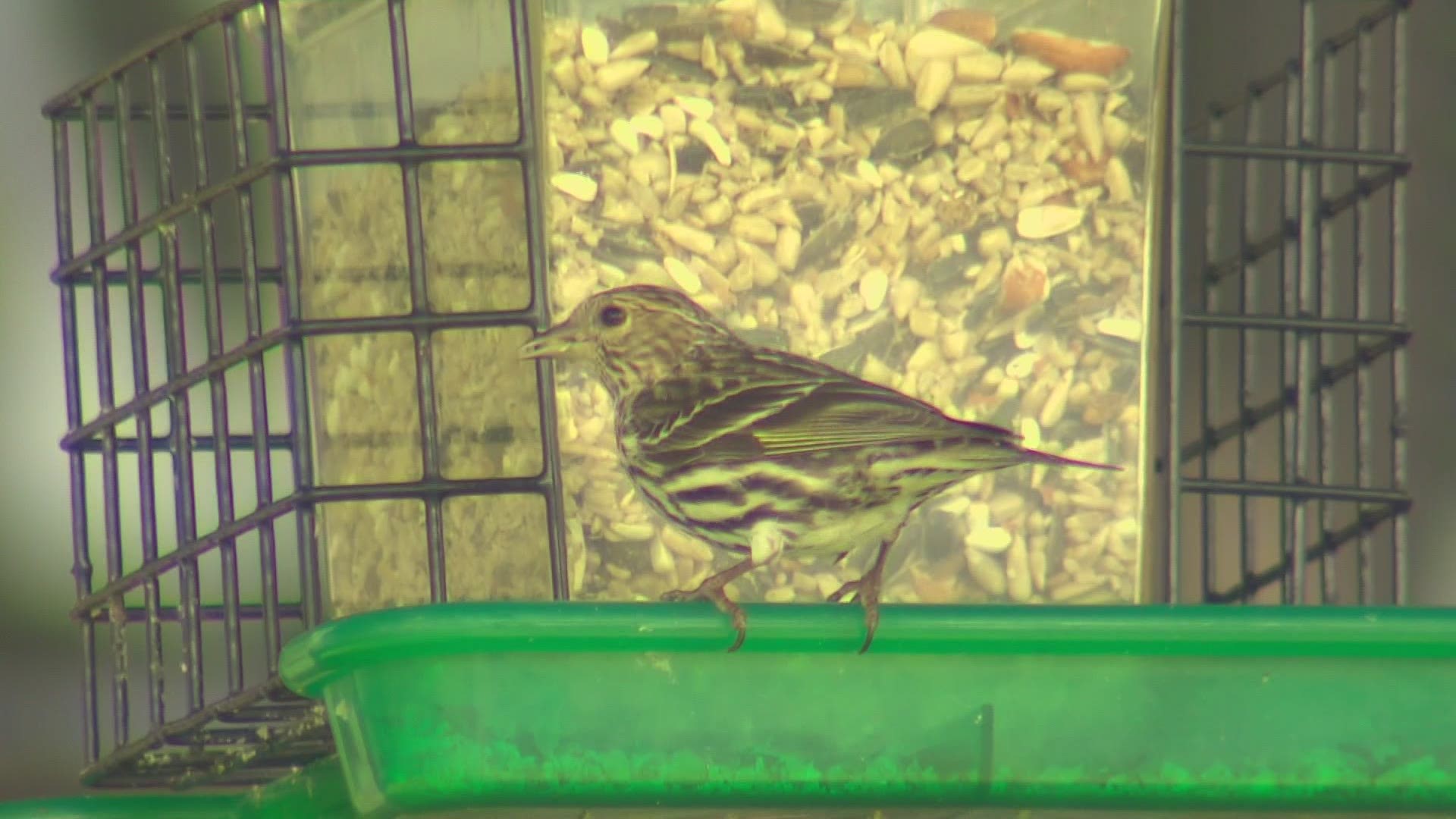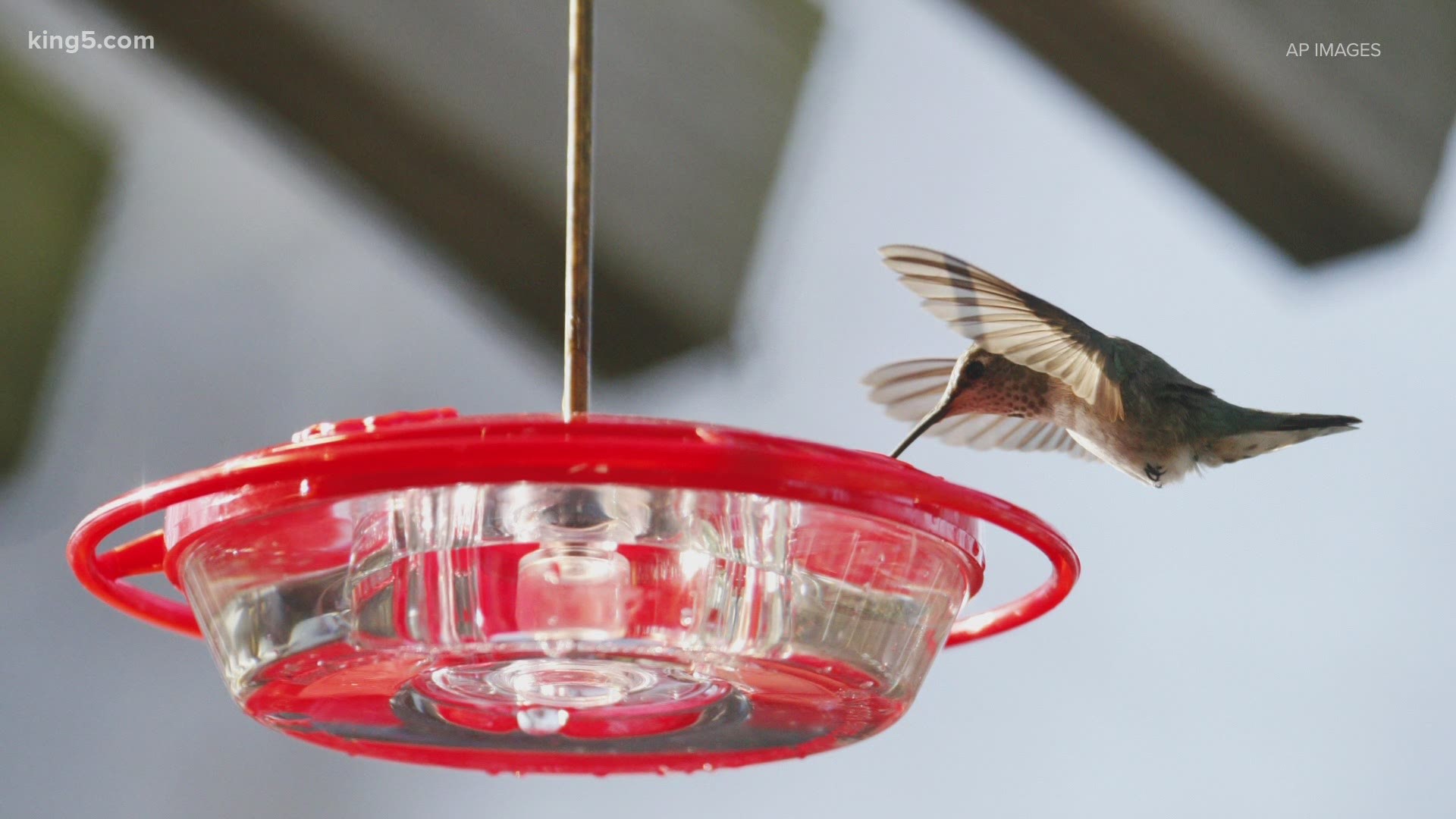SEATTLE — State wildlife officials say bird feeders can be restored across Washington after a deadly disease outbreak, though they are warning people to start slow.
Earlier this year, the Washington Department of Fish and Wildlife (WDFW) asked people to remove birdbaths and feeders to help stop the spread of salmonellosis, a fatal bird disease impacting hummingbirds, finches and other songbirds. WDFW said when birds flock together, they can transmit the disease through their saliva and droppings. That makes feeders and birdbaths a hotspot for transmission.
"The first signs that a bird may have salmonellosis is often a seemingly tame bird on or near a feeder. Birds infected with salmonella become very lethargic, fluff out their feathers, and are easy to approach," WDFW posted online.
The issue was compounded by an influx of pine siskins coming south in search of food. More birds meant more potential for transmission.
Earlier this winter, PAWS in Lynnwood received 135 Pine Siskins, which is about triple their previous season record. Not all of the birds they received were sick, but they said for the ones that are, there is little they can do to treat the stricken birds, and they're often euthanized.
Reports of sick birds soared this winter. The agency saw 42 reports in December, then a spike to 881 in January, before reports shrank to 223 in February. That trend is why they feel safe with the new guidance.
"Since WDFW first put out word of the outbreak in early January, reports of sick or dead birds have decreased substantially, but they are still coming in, so we are suggesting that people take their time in returning to their full scale of feeding," the agency said on March 26.
As for returning those bird feeders, WDFW says to start slow with just one or two and space them far apart. Officials also recommend using the tube-style feeders with individual perches which will further disperse the birds. This guidance will also help reduce outbreaks going forward, WDFW said.
People should use caution while cleaning and filling feeders, officials said, since salmonella can be transmitted to humans. Wear disposable gloves and use a 10% bleach solution to clean the feeders.
WDFW also warns anyone living near bear country to consider leaving feeders down as they can attract hungry bears coming out of hibernation.
Officials say this reduced and dispersed guidance is encouraged for about another month in May statewide.
"We appreciate that they did take those bird feeders down or they did take the time to clean them very well to try to help protect our birds," said Staci Lehman with WDFW.


